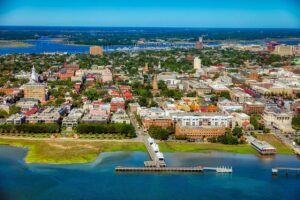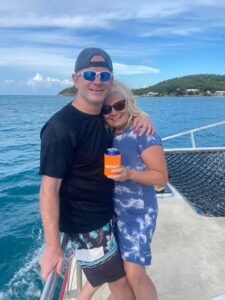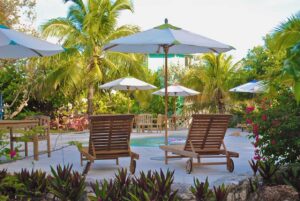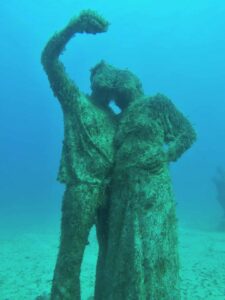Florida’s boating pleasures come in two distinct varieties: east coast and west coast. Each has a loyal following ready to tell you why theirs is the best. The Keys may be the common link for boaters from each area occasionally heading south for an extended cruise. But there is a less frequently used link joining these two coasts that my wife Dori and I had the pleasure of experiencing last winter: The Okeechobee Waterway. We’re still amazed by the replies of others when we tell them of our crossing. Many say they’ve often considered doing it but thought it was too shallow for cruising, and a surprising number say they didn’t even know it existed. We ourselves thought it would be too difficult and shallow for our five-foot draft, but we learned from a fellow boater in Key west that the Army corp of Engineers posts daily (offshoreblue.com) about the Okeechobee’s current depth, making it possible to know for certain if it’s safe to cross.
The waterway was created by two man-made canals connecting the head waters of the Caloosahatchee River from the west and the St. Lucie River from the east to Lake Okeechobee. It is 134.3 nautical miles from the intersection with the Intracoastal Waterway (ICW) at St. Lucie on the east coast to the Gulf Intracoastal Waterway (GICW) on the west coast. Three locks raise vessels from sea level on the gulf side to Lake Okeechobee, and two locks lower crafts back down to sea level on the Atlantic Ocean side. The specific elevation change in the locks will vary with the depth of the lake.
The locks are not difficult if you are prepared for them. The lock walls are concrete, so having enough durable fenders to protect your boat is important. The lock tenders will tell you on which side of the lock they want you to tie. When you are rising in a lock, the lock tenders will lower fore and aft lines to you. You will take a wrap or two around cleats on the boat and take up the slack as the boat rises. If possible, it’s best not to be the first boat in, as that boat takes the turbulence of the water coming through the opening in the forward lock gate. Conversely, when you are in a lock being lowered, you take one or two wraps with the line to a cleat and allow it to play out as the boat is dropping. Boaters should wear a sturdy pair of gloves with which to handle the lines.
A fast boat can make it across the waterway in a single day, whereas sailboats and trawlers typically take two days. While the Okeechobee Waterway was intended to be just a passage across the state, it goes through an interesting part of Florida that is rich in history. For those who can take the time, you will pass through four communities that are worth a visit: Port Labelle, Moore Haven, Clewiston and Indiantown. These towns and villages give you a real sense of “old Florida,” where hunting, trapping and fishing are still an important way of life. Wilderness outfitters will gladly show you the beauty of this remote area by planning a fishing or hunting expedition for you. You can also learn about Florida’s first citizens at the Indian burial grounds and museums located nearby — the Ah-Tah-Thi-Ki Seminole Indian Museum near Clewiston is particularly interesting. And lastly, for the thrill seekers aboard, there are airparks along the way where you can learn to skydive and hang glide.
Florida is a fascinatingly diverse state, heavily influenced by the cultures and ways of all its transplanted citizens and visitors. With most of the development and tourism occurring along the coasts, central Florida still has much of its original culture and character intact. The waterway will make for easy passage from one coast to the other, but it also provides for interesting stops along the way. Because remember, boating is as much about the journey as the destination. Don’t miss the opportunity to take a wonderful trip across the Okeechobee Waterway.





